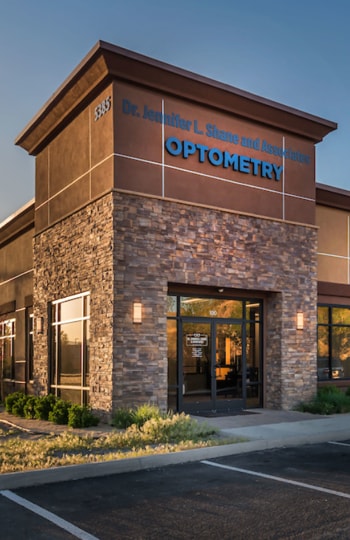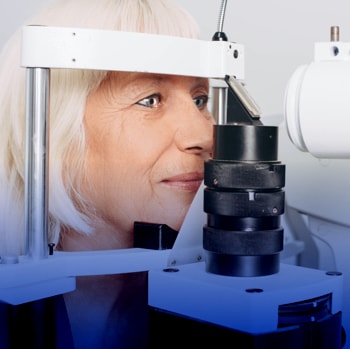Glaucoma
Glaucoma is an eye disease that damages the optic nerve. There are many different types of glaucoma, but optic nerve damage is usually associated with elevated intraocular pressure (IOP). However, not everyone with elevated IOP will develop glaucoma, and not every form of glaucoma leads to elevated IOP.
Because glaucoma can advance with minimal early symptoms, and because it is the leading cause of blindness in those over 60, a test for glaucoma is included in every comprehensive eye exam.
Types of Glaucoma
Each type of glaucoma comes with its own causes and symptoms.
- Primary open-angle glaucoma is the most common form of glaucoma. It progresses slowly and painlessly, so many people with this type of glaucoma may not realize they have it until they start noticing problems with their vision. Primary open-angle glaucoma is generally believed to be caused by problems with the eye’s drainage system, leading to an increase in fluid and eventual buildup of IOP.
- Angle-closure glaucoma is less common and is considered a medical emergency and may cause vision loss within a day of its development. Angle-closure glaucoma occurs when the eye’s drainage angle (between the cornea and the iris) is very narrow, which becomes more narrow as the individual ages. This narrowing blocks the drainage system, causing fluid to build up and increase IOP.
- Secondary glaucoma can result from an injury, eye disease, medical conditions, medications, or eye abnormalities. Very rarely, eye surgery can lead to secondary glaucoma.
- Normal-tension or low-tension glaucoma is a type of glaucoma that occurs even when the IOP remains within the normal range. The optic nerve is still damaged, although the exact cause is unknown. Those who develop normal-tension glaucoma may have a reduced blood supply to the optic nerve or have an unusually sensitive optic nerve.
Age-Related Macular Degeneration
Age-related macular degeneration (AMD) is an eye disease that affects the macula, the part of the retina responsible for sharp central vision. The signs and symptoms of AMD are usually very gradual but can eventually make recognizing faces, driving, or watching TV difficult or impossible.
AMD is the leading cause of vision loss in those over 50 but does not affect the peripheral vision, so usually does not lead to complete blindness.
Detect AMD With Regular Eye Exams
The first signs of AMD can be identified with regular eye exams. With early detection, AMD may be slowed with the proper lifestyle and nutritional changes. As this disease progresses, treatments like intravitreal injection (injections into the vitreous), laser treatment, or photodynamic therapy can help to manage AMD development.
Types of AMD
There are two kinds of age-related macular degeneration. Both are characterized by damage to the macula, causing central vision loss.
- Dry (Atrophic) AMD: As we age, drusen deposits develop under the retina. Over time, the amount and size of drusen deposits grow, obscuring vision. Eventually, they may interfere with central vision.
- Wet (Exudative) AMD: This type of AMD is far more severe than dry AMD. It occurs when weak blood vessels break, leak, and leave scar tissue, damaging the retina. If left untreated, this type of AMD can cause blindness.



















